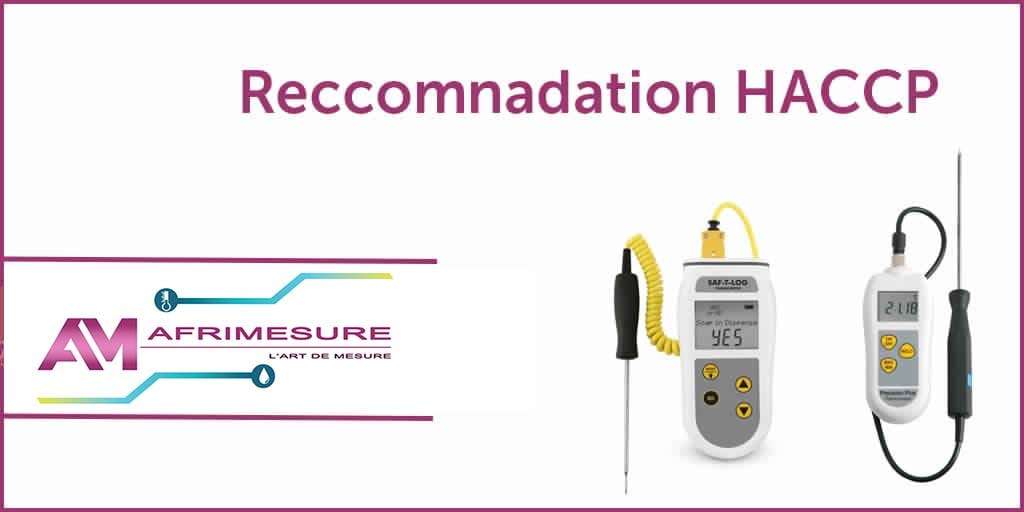
When choosing your measuring instrument, mainly thermometers and temperature recorders , it's important to check whether the equipment selected complies with the recommendations or not,
In the agri-food sector, the HACCP recommendation is one of the key guidelines to follow in your quality policy.
HACCP Hazard Analysis Critical Control Point
Hazard Analysis Critical Control Pointhttps://fr.wikipedia.org/wiki/Analyse_des_dangers_et_points_critiques_pour_leur_maîtrise
is based on hazard analysis and critical control points.
It is used to describe an internationally recognized means of managing food safety and consumer protection.
It is a requirement of European food hygiene legislation that applies to all food business operators, with the exception of farmers and producers.
EU Regulation 852/2004 (article 5) requires food-related businesses to implement and maintain hygiene procedures based on HACCP principles. This law replaced the 2002 (HACCP) meat regulation
Analysis of HACCP
HACCP is internationally recognized as the system of choice for food safety management. It is a preventative approach to food safety based on the following seven principles:
The HACCP approach provides a systematic means of identifying food safety hazards and ensuring that they are controlled day by day.